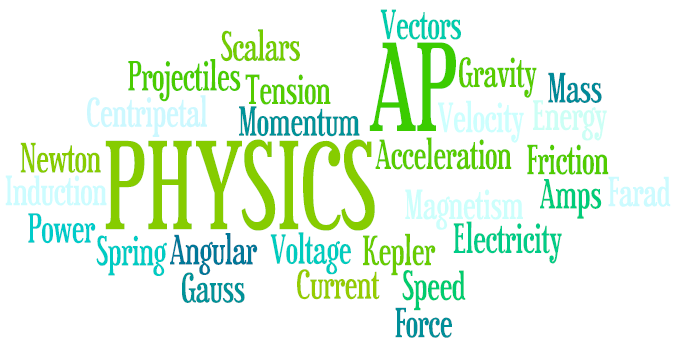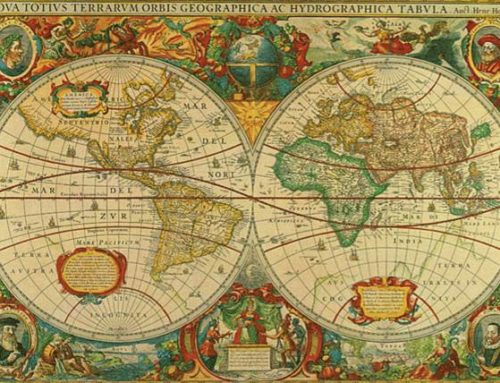AP Physics Program
The AP Program offers four physics courses.
- AP Physics 1 is a full-year course that is the equivalent of a firstsemester
introductory college course in algebra-based physics. - AP Physics 2 is a full-year course that is the equivalent of a secondsemester introductory college course in algebra-based physics.The course covers fluids; thermodynamics; electrical force, field, and potential; electric circuits; magnetism and electromagnetic induction; geometric and physical optics; and quantum, atomic, and nuclear physics.
- AP Physics C: Mechanics is a half-year course that is the equivalent of a semester-long, introductory calculus-based college course. It covers kinematics; Newton’s laws of motion; work, energy, and power; systems of particles and linear momentum; circular motion and rotation; and oscillations and gravitation.
- AP Physics C: Electricity and Magnetism is a half-year course following Physics C: Mechanics that is the equivalent of a semesterlong, introductory calculus-based college course. It covers electrostatics; conductors, capacitors, and dielectrics; electric circuits; magnetic fields; and electromagnetism.
LABORATORY REQUIREMENT
This course requires that 25 percent of the instructional time will be spent in hands-on laboratory work, with an emphasis on inquiry based investigations that provide students with opportunities to demonstrate the foundational physics principles and apply the science practices. Inquiry-based laboratory experiences support the AP Physics 1 course and AP Course Audit curricular requirements by providing opportunities for students to engage in the seven science practices as they design plans for experiments, make predictions, collect and analyze data, apply mathematical routines, develop explanations, and communicate about their work. Colleges may require students to present their laboratory materials from AP science courses before granting college credit for laboratory work, so students should be encouraged to retain their laboratory notebooks, reports, and other materials.
PREREQUISITES
There are no prerequisite courses. Students should have completed geometry and be concurrently taking Algebra II or an equivalent course. Although the Physics 1 course includes basic use of trigonometric functions, this understanding can be gained either in the concurrent math course or in the AP Physics 1 course itself.
AP Physics 1 Course Content
Students explore principles of Newtonian mechanics (including rotational motion); work, energy, and power; mechanical waves and sound; and introductory, simple circuits. The course is based on six big ideas, which encompass core scientific principles, theories, and processes that cut across traditional boundaries and provide a broad way of thinking about the physical world. The following are the big ideas:
- Objects and systems have properties such as mass and charge. Systems may have internal structure.
- Fields existing in space can be used to explain interactions.
- The interactions of an object with other objects can be described by forces.
- Interactions between systems can result in changes in those systems.
- Changes that occur as a result of interactions are constrained by conservation laws.
- Waves can transfer energy and momentum from one location to another without the permanent transfer of mass and serve as a mathematical model for the description of other phenomena.
Science Practices
Students establish lines of evidence and use them to develop and refine testable explanations and predictions of natural phenomena. Focusing on these disciplinary practices enables teachers to use the principles of scientific inquiry to promote a more engaging and challenging experience for AP Physics students. Such practices require that students:
- Use representations and models to communicate scientific phenomena and solve scientific problems;
- Use mathematics appropriately;
- Engage in scientific questioning to extend thinking or to guide investigations within the context of the AP course;
- Plan and implement data collection strategies in relation to a particular scientific question;
- Perform data analysis and evaluation of evidence;
- Work with scientific explanations and theories; and
- Connect and relate knowledge across various scales, concepts, and representations in and across domains.
AP PHYSICS 1 EXAM: 3 HOURS
Exam questions are based on learning objectives, which combine science practices with specific content. Students are assessed on their ability to:
- Provide both qualitative and quantitative explanations, reasoning, or justification of physical phenomena, grounded in
physics principles and theories; - Solve problems mathematically — including symbolically — but with less emphasis on only mathematical routines used for solutions;
- Interpret and develop conceptual models; and
- Transfer knowledge and analytical skills developed during laboratory experiences to design and describe experiments
and analyze data and draw conclusions based on evidence. Students will be allowed to use a four-function, scientific, or
graphing calculator on the entire AP Physics 1 and AP Physics 2 Exams. Scientific or graphing calculators (including the approved graphing calculators).
Format of Assessment
Section I: Multiple Choice: 50 Questions | 1 Hour, 30 Minutes | 50% of Exam Score
• Discrete questions
• Questions in sets
• Multiple-correct questions (two options are correct)
Section II: Free Response: 5 Questions | 1 Hour, 30 Minutes |50% of Exam Score
• Experimental Design (1 question)
• Quantitative/Qualitative Translation (1 question)
• Short Answer (3 questions, one requiring a paragraph-length argument)






Leave A Comment
You must be logged in to post a comment.